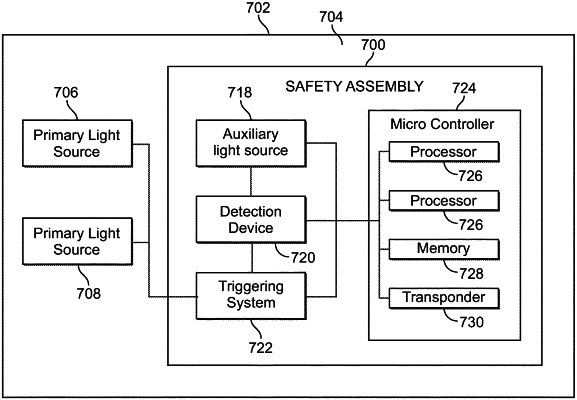| CPC A61B 5/6844 (2013.01) [A61B 5/0095 (2013.01); A61B 5/1032 (2013.01); A61B 5/443 (2013.01); G01N 29/2418 (2013.01)] | 13 Claims |

|
1. An optoacoustic probe for optoacoustic imaging of a volume, the optoacoustic probe having a distal end operable to contact the volume and a proximal end, the optoacoustic probe comprising:
at least one laser outside a probe housing configured to generate light that is transmitted along a light path to generate optoacoustic return signals when the light reacts with the volume;
an optical window configured to carry the light along the light path to the volume;
a light emitting diode within the probe housing and configured to generate auxiliary light carried through the optical window to the volume during operation of the optoacoustic probe;
a detection device configured to detect signals generated from the light emitting diode and the light generated by the at least one laser reflecting from the volume or the optical window; and
a microcontroller including one or more processors, and a memory coupled to the one or more processors, wherein the memory stores program instructions, wherein the program instructions are executable by the one or more processors to:
receive the signals generated from the auxiliary light reflecting from the volume;
determine contact between the volume and the optoacoustic probe based on the signals generated from the auxiliary light reflecting from the volume; and
prevent the at least one laser from generating the light until the optoacoustic probe is contacting the volume;
wherein the light emitting diode is within a distal portion of the probe housing adjacent to the optical window.
|